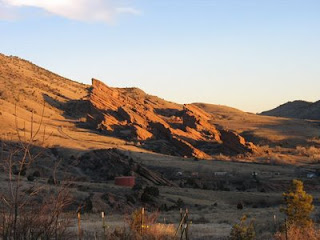What’s better on a cold winter day than a pot of potato soup? Alas, the
potato world is poorer with the loss of economic botanist Carlos Ochoa, who said potatoes “are like children: you name them, and in turn, they give you a great deal of satisfaction.” Robert’s link-heavy post at Agricultural Biodiversity will take you on a journey of potato exploration, and, thanks to Carlos’ work, potatoes will continue to satisfy our need for nourishment.
Sarcozona promises “depressing news every Thursday” at Gravity’s Rainbow, so tune in for this week’s dose on Extinction Thursday to learn more about a plant that’s gone extinct lately—and why!
Alex is the Watcher at Watching the World Wake Up (aka WTWWU), and his watchful eye detects a lot of botany while he's out riding the mountain bike trails of Utah (and sometimes elsewhere). He recommends St. George, Utah, because "first, it's an area with really, really interesting botany that isn't well known. Second, it's largely snow-free with interesting and accessible plants in the cold months. And third, if any plant-oriented readers are thinking of a warm-weather getaway in the next 3-4 months, St. George is great destination." His three rides, each in a different life zone, start on the desert floor and work up.
 As a new convert to botany, Alex gets passionate about stuff on the trail and the details of coevolution of red squirrels and pine cones. I've really enjoyed his in-depth approach, as evidenced in another three-part series on hybrid oaks, including new discoveries. (Watcher's amazing graphics are a highlight of his posts!)
As a new convert to botany, Alex gets passionate about stuff on the trail and the details of coevolution of red squirrels and pine cones. I've really enjoyed his in-depth approach, as evidenced in another three-part series on hybrid oaks, including new discoveries. (Watcher's amazing graphics are a highlight of his posts!)Join Ian for a look at "Gumbo Limbo," aka Bursera, trees and a lesson in speciation, with Evolution and conservation in Mexican dry forests from Tropical ecology notes.
A visit to Walking Prescott from GrannyJ's daughter, who lives in darkest Alaska, mandated "a warm sunshine fix," she says. "So we drive 40 miles downhill from our town at 5400 ft. elevation in the mountains to a nearby desert river, where I surveyed the cactus scene and found wonderful nursery trees/shrubs." Stop by for a fabulous assortment of Sonoran desert cacti to brighten our winter scenes.
Here at Foothills Fancies, we've revisited an old friend at Coyote Semilla, which is, alas, my only plant post this entire month! Whatever happened to Plant of the Week? Ah well, that's what resolutions are for, right?
What's a "Peepal Tree?" I can almost hear you asking. Not a lot of botany in this post, but it does bring us a Peepal tree and a very cheerful look at Nagaraja Temple in bright and warm and Admirable India. If
you're looking to escape snow and cold, check it out!
A late and welcome entry comes from Tai Haku, who stumbled across a fertile (and perhaps futile) female of the cycad persuasion recently. Vasquez pollen donations are welcome at Earth, Wind, & Water, where another handy post collects all of Tai's cycad posts for the true enthusiast.
 Lastly, two posts gleaned from bio-bloggers also brighten the winter scenery. Chris at Catalogue-of-Organisms fills us in on core eudicots and weird rhubarb, great background for future discussions of plant classification. Nina at Nature Remains visits Seibenthaler fen out Beyond Xenia, providing excellent photos and finding color in winter botany.
Lastly, two posts gleaned from bio-bloggers also brighten the winter scenery. Chris at Catalogue-of-Organisms fills us in on core eudicots and weird rhubarb, great background for future discussions of plant classification. Nina at Nature Remains visits Seibenthaler fen out Beyond Xenia, providing excellent photos and finding color in winter botany.Have a Happy New Year, all, and be sure to join Alex the Watcher for the January edition, first of the brand new year, to be posted end-of-month at Watching the World Wake Up.
























